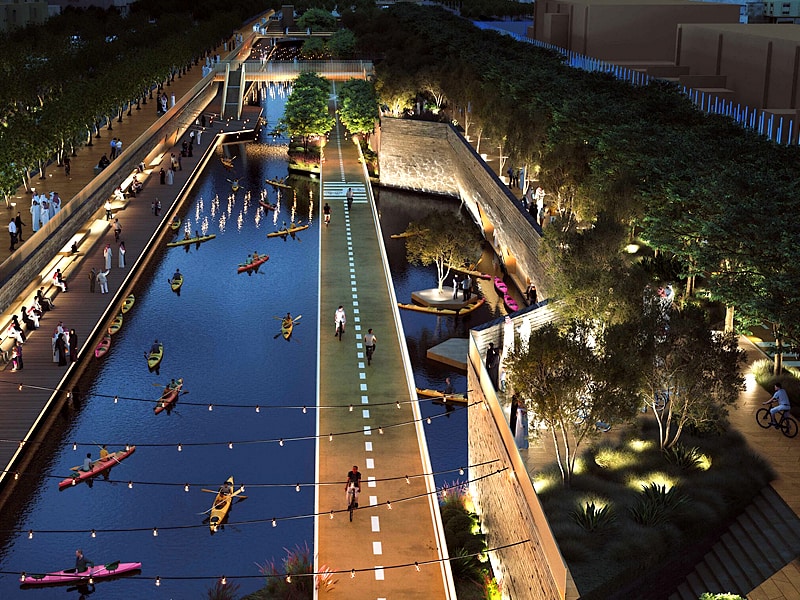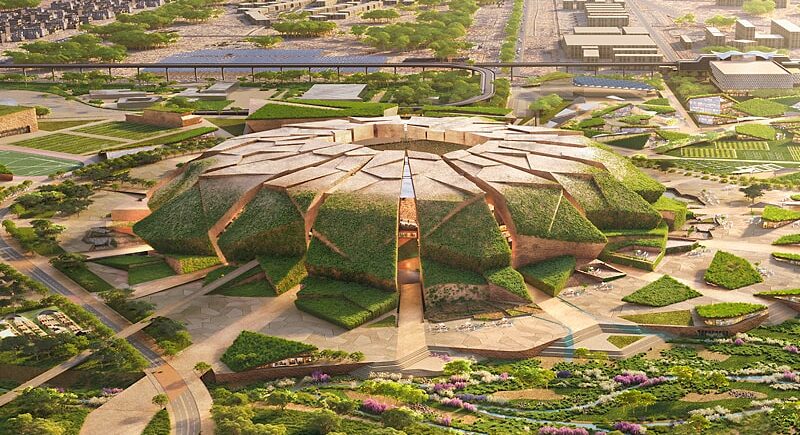Riyadh has taken a big step toward a greener and smarter future. The Saudi capital has officially begun the first phase of planting for its massive urban forest, known as the “Green Spine.” Alongside this green initiative, the city is also introducing real-time tracking for water and electricity usage, giving citizens new tools to manage resources efficiently.
This double announcement shows that Riyadh is moving fast to create a more sustainable, eco-friendly, and tech-forward city. These changes are part of the ambitious Riyadh Sustainability Strategy, which is set to transform the capital into one of the world’s most livable cities.
The First Phase of the Green Spine Begins
The Green Spine is a large-scale urban forest project that will stretch across Riyadh’s city center. It’s more than just a beautification effort. The goal is to plant millions of trees that will help reduce temperatures, improve air quality, and increase biodiversity in the region.
This first phase of planting is already underway. Workers and volunteers have begun adding native trees and shrubs to public spaces, highways, and neighborhoods. These plants are carefully selected to survive in the desert climate and help reduce the city’s heat island effect.
City officials say that this phase includes planting tens of thousands of trees along key roads and walkways. Over time, this green network will connect different parts of the city, creating natural corridors for both people and animals.
The Green Spine will not only offer more shade and cleaner air but will also include parks, pedestrian areas, and cycling lanes. It’s designed to promote a healthy lifestyle, reduce car traffic, and make Riyadh more walkable for everyone.
Citizens Can Now Track Utilities in Real-Time

In addition to the green push, Riyadh has rolled out a brand-new system that allows citizens to track their water and electricity usage in real time. This new feature is part of the city’s smart infrastructure upgrade.
The real-time tracking tool is available through a mobile app and web platform. Users can now check exactly how much water or electricity they are using by the hour, day, or month. This helps households become more aware of their consumption and encourages them to make smarter choices.
For example, if a family sees that their water usage spikes at certain times of day, they can look for leaks or consider using water-saving appliances. Similarly, by monitoring energy use, residents can switch to energy-efficient lighting, adjust air conditioning habits, or use appliances during off-peak hours to save money.
Officials say this system will not only support individual users but also help the government manage resources more effectively. Data collected from across the city can help spot overuse or leaks in the network and allow quicker responses to issues.
A Smart and Sustainable Vision for Riyadh
The launch of the Green Spine and smart utility tracking are not separate events. They are part of a bigger vision to make Riyadh a global model for green cities.
The Saudi Green Initiative, launched by Crown Prince Mohammed bin Salman, includes goals like planting 10 billion trees across the Kingdom and generating 50% of the country’s electricity from renewables by 2030. Riyadh’s local projects are key to achieving those national targets.
With this strategy, city planners aim to cut carbon emissions, reduce energy use, and improve the overall quality of life for citizens. Riyadh will become a city where green parks are a short walk away, public transportation is clean and fast, and homes use energy and water wisely.
What Citizens Are Saying
The response from the public has been mostly positive. Many citizens are excited about seeing more green spaces and cleaner air in the future. Families are looking forward to spending more time outdoors in shaded parks. Fitness lovers are happy about the new walking and cycling lanes.
One resident, Amal Al-Qahtani, said, “I’ve lived in Riyadh all my life, and this is the first time I feel like the city is really changing for the better. The trees, the parks, even the app to check my water and electricity – it all makes life easier and more beautiful.”
Some citizens also see these efforts as a way to teach children about the environment and how to care for it. Schools have started taking students on field trips to planting sites, showing them how urban forests are made.

Challenges and the Road Ahead
While the plans are exciting, there are still challenges to overcome. Planting trees in a desert city requires careful planning, advanced irrigation systems, and long-term care. The success of the Green Spine will depend on keeping the trees healthy and ensuring the public supports the effort.
Also, for smart utility tracking to make a big impact, people need to actually use the technology. The government plans to raise awareness through campaigns, workshops, and partnerships with schools and community centers.
But city officials are confident that Riyadh is on the right path. They believe that once people start seeing the changes – cooler temperatures, green walkways, and lower utility bills – the support will grow naturally.
A Glimpse of Riyadh’s Future
With the first trees now in the ground and new tech in people’s hands, the transformation of Riyadh has officially begun. The Green Spine will take several years to complete, but its first steps are already visible. And with real-time water and electricity tracking, citizens are becoming more active in shaping a sustainable future.
Also read: Kuwait Bans Plastics in All Offices: Big Change Ahead



